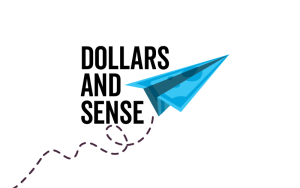Sewn binding is one of the oldest forms of bookbinding, and remains the most durable and longest-lasting method. Pages are bound together with pieces of thread and adhered to the book’s spine. Choosing the right bookbinding method is a critical decision when printing, as it affects the margins and page size, while also saying a lot about the book’s use, quality, and content.
What Is Sewn Binding?
There are four main types of bookbinding. The type that you choose depends on what the document will be used for, so it is important to learn the main pros and cons of each method. Sewn bookbinding is the most durable method of binding books and is commonly used for textbooks, journals, encyclopedias, children’s books, library books, and private documents and logs. There are many ways to bind a book together, using glue, metal, and plastic, and each has its own benefits and uses, depending on the print job. Some of the oldest books in the world have sewn binding.
The Sewn Binding Process
When sew binding a book, organize pages into groups of 16 to 24, called signatures, and fold them together. Stitch the pages together individually along the folds. Threads go through each page several times before being tied off. Once a group is finished, it’s sewn together with another group with a thread called the book block. An adhesive is used along the edges to seal the spine tightly. The cover of the book is then attached to the spine, to protect the pages. Small strips of cloth, called headbands and footbands, are often used to hide the edges of the binding decoratively. Sewn binding is most often used for casebound books but is also used for soft and hardcover books.
Pros of Sewn Binding:
- Sewn bound books lay flat on a table when opened, which makes them ideal for books with images that span across two pages.
- Extremely durable and high quality, the binding will stay together as long as the pages last.
- It is designed to withstand wear and tear, making it an excellent choice for books that will be well-used over periods of time, such as textbooks.
- Books that use sewn binding are tamperproof, as someone cannot remove a single page without damaging the entire book, making it popular for sensitive documents.
- Pages cannot fall out as they are sewn together in signatures.
Cons of Sewn Binding:
- Sewn binding is more costly because it is more time consuming than other binding methods and requires specialized equipment.
- Custom sewn binding can add a significant amount of production time to a project’s timeline.
A similar method of binding, which is quicker and more affordable but less durable, is perfect binding. Perfect binding is more popular for softcover books. Instead of using thread, abrasives are used to roughen the edges of the pages, and then they are glued together and secured with a soft cover.
Related: What Book Binding Method Is Right for Your Print Job?
Sewn binding is a traditional method of binding books together and is still very popular today. Books that need to stand the test of time, will be used often, and need durability or added security, are often sewn bound. Instead of being bound together using metal or plastic, pages are sewn together using thread, making it nearly impossible to remove a single page from the book. If you are interested in learning more about book binding, or want your next book to be bound professionally, contact a print expert at Ironmark today!




